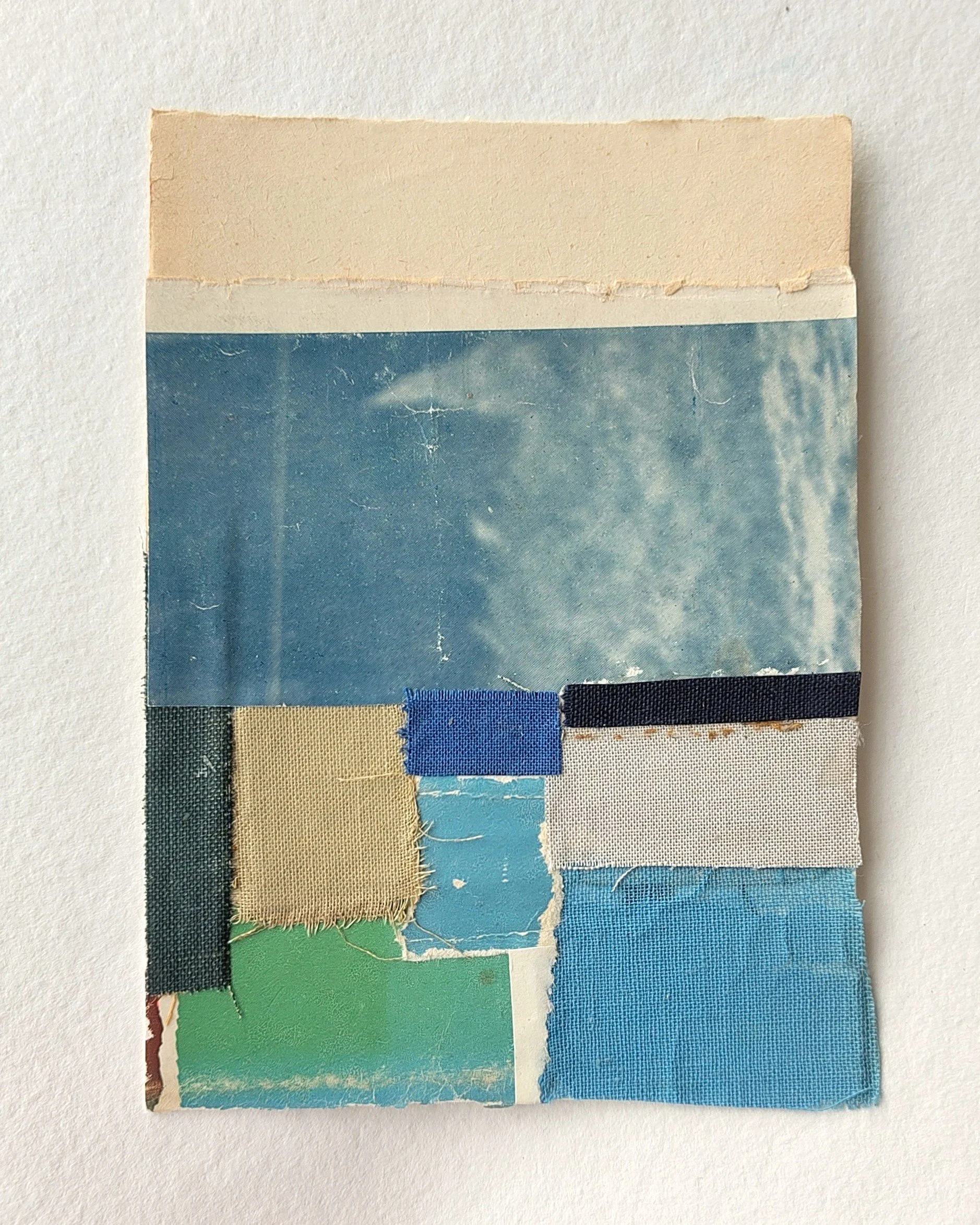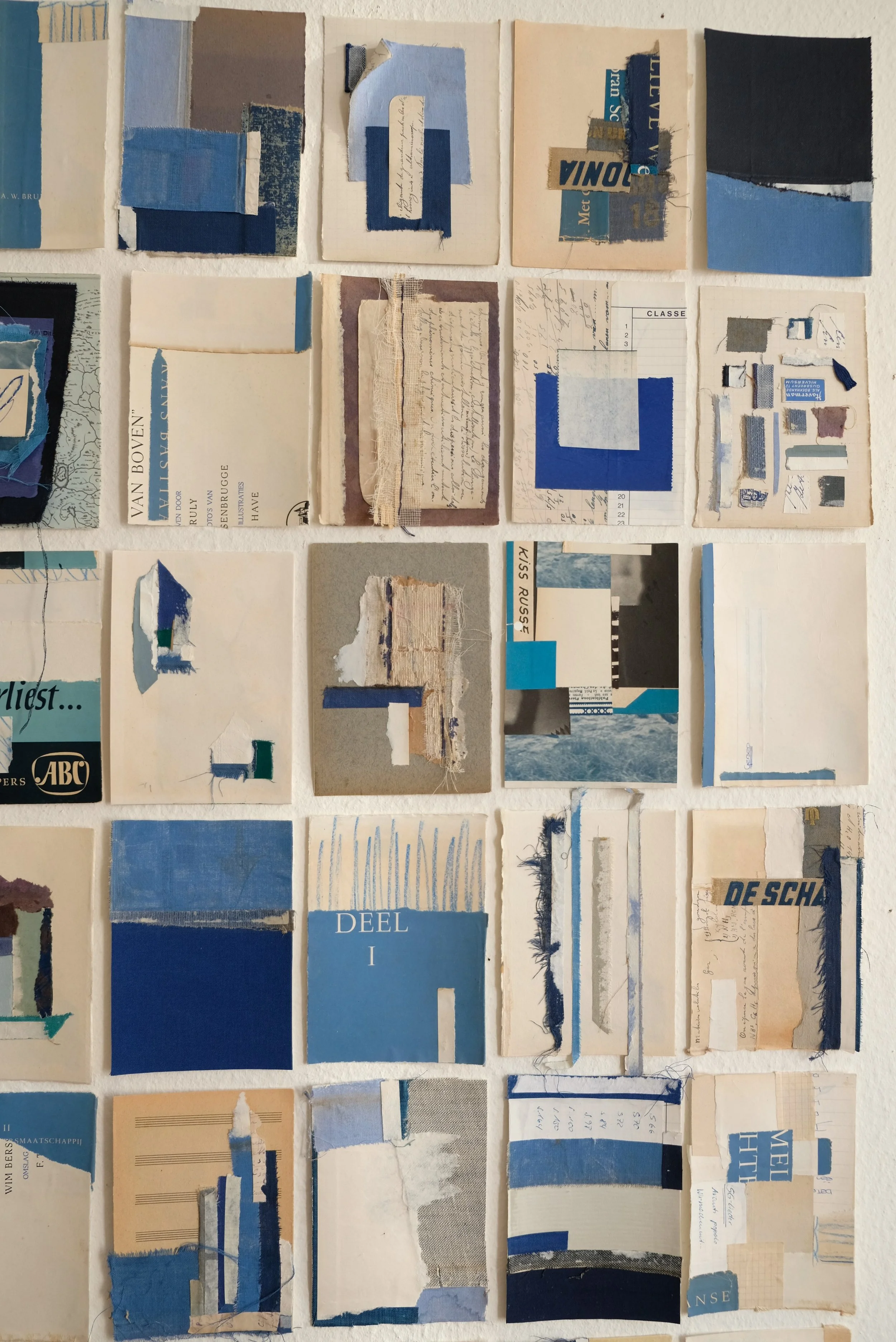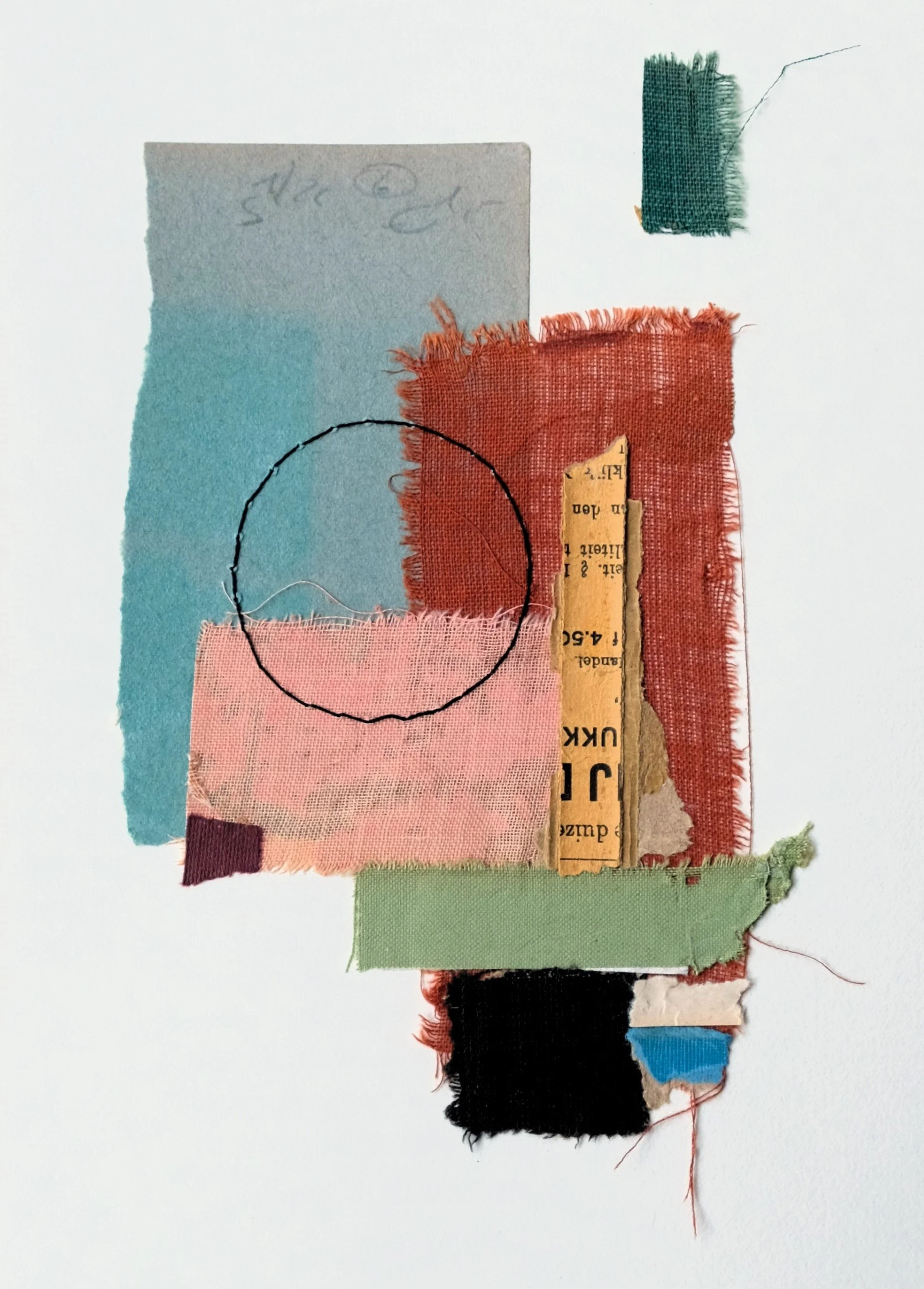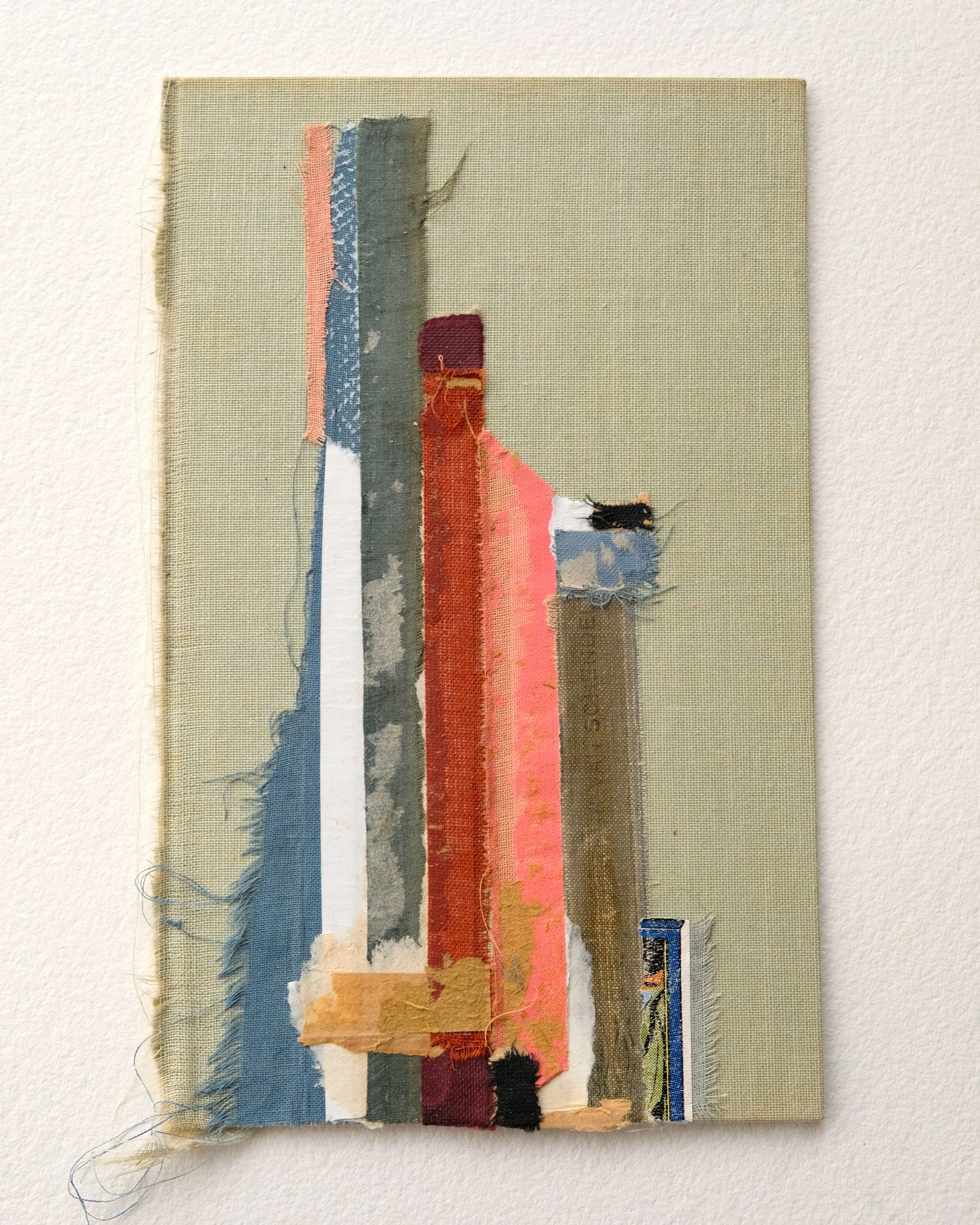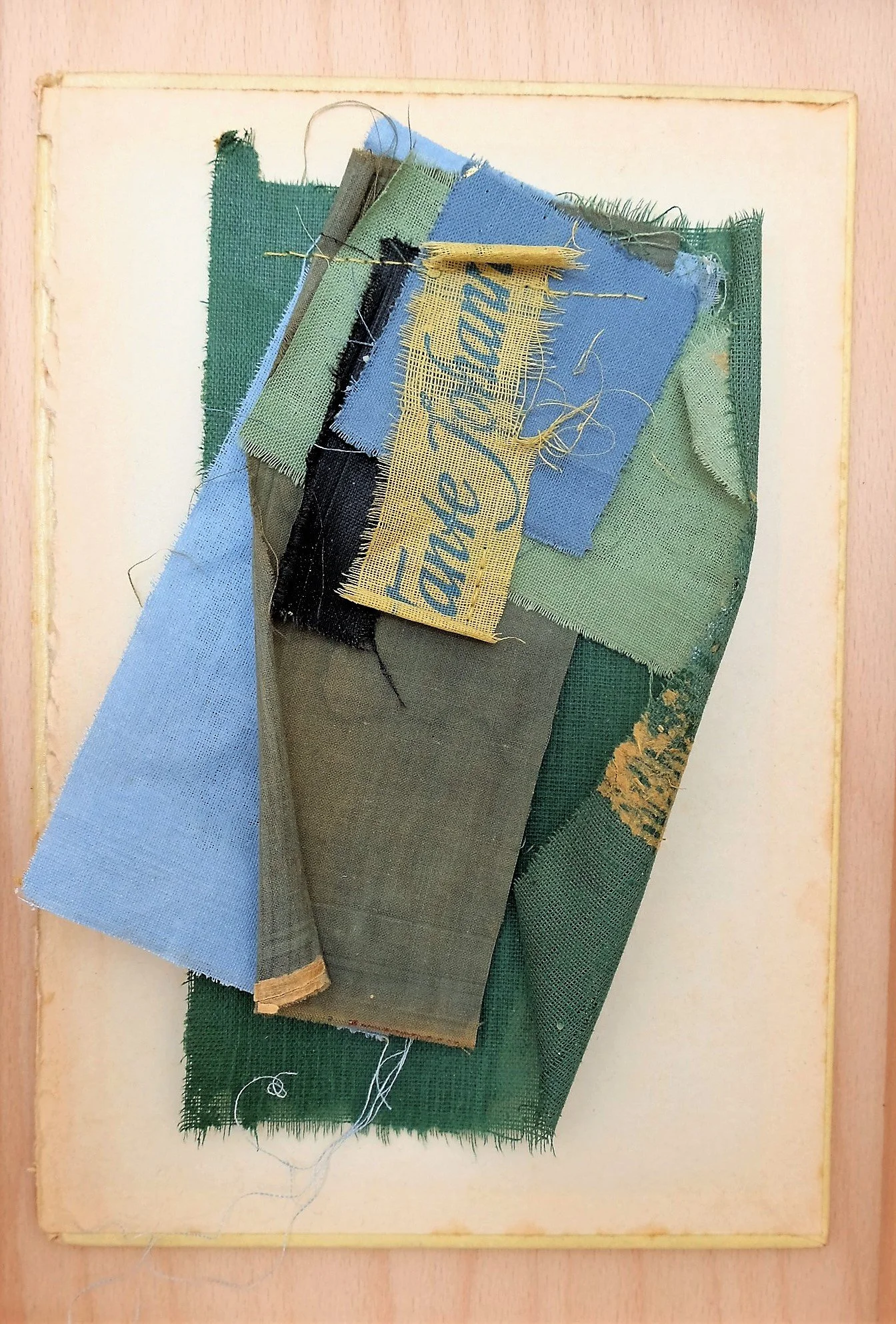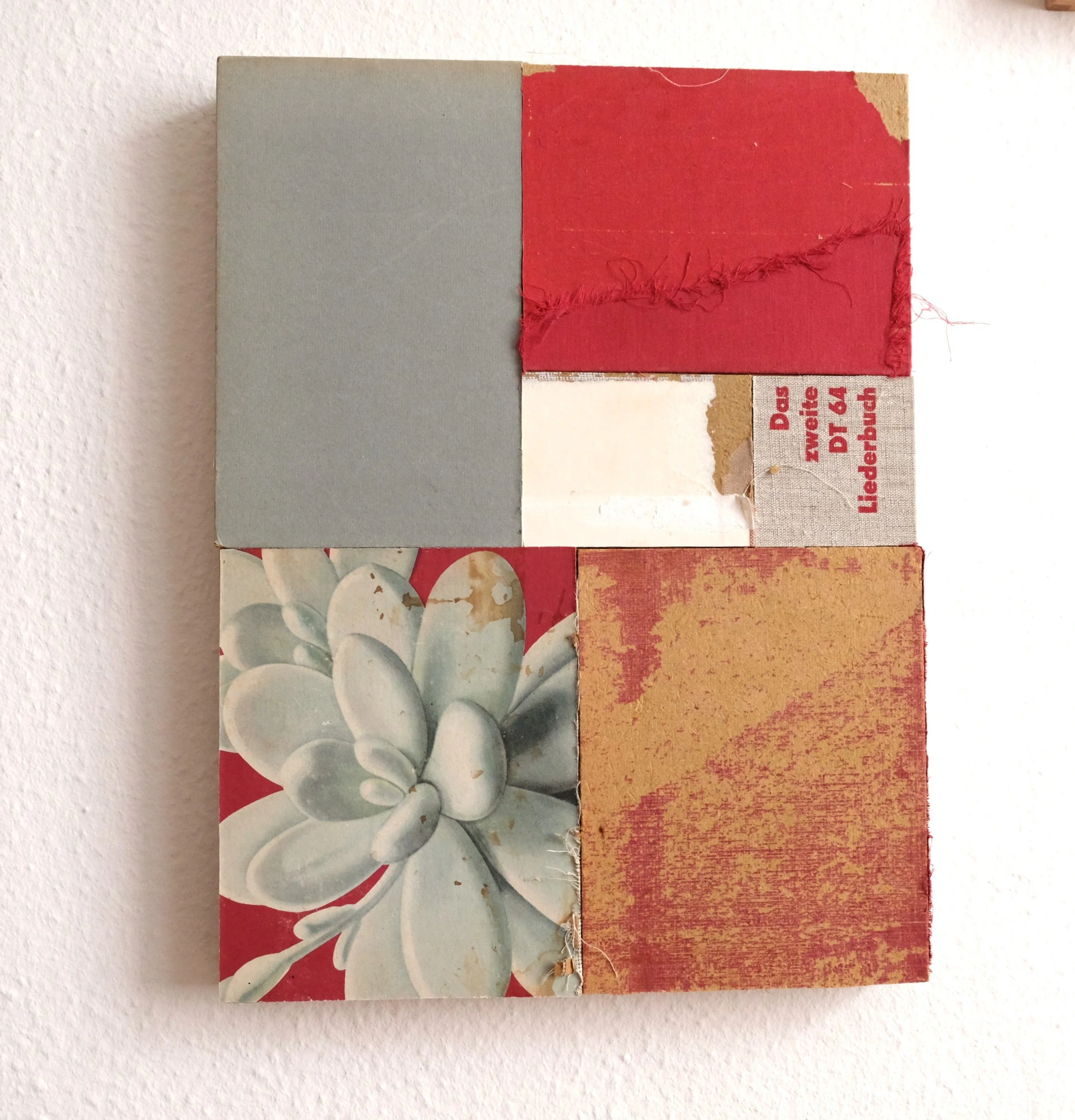Janien Prummel
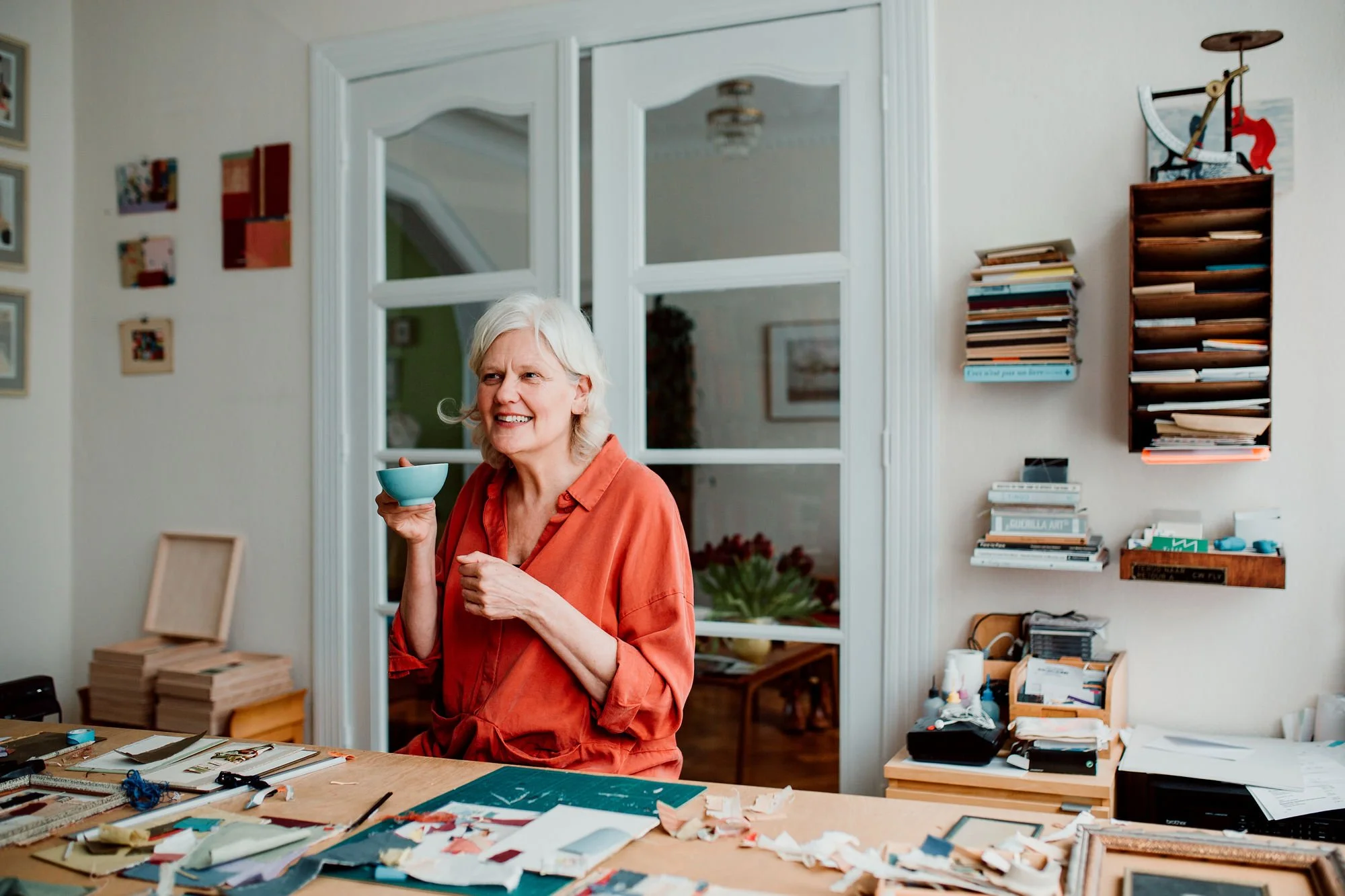
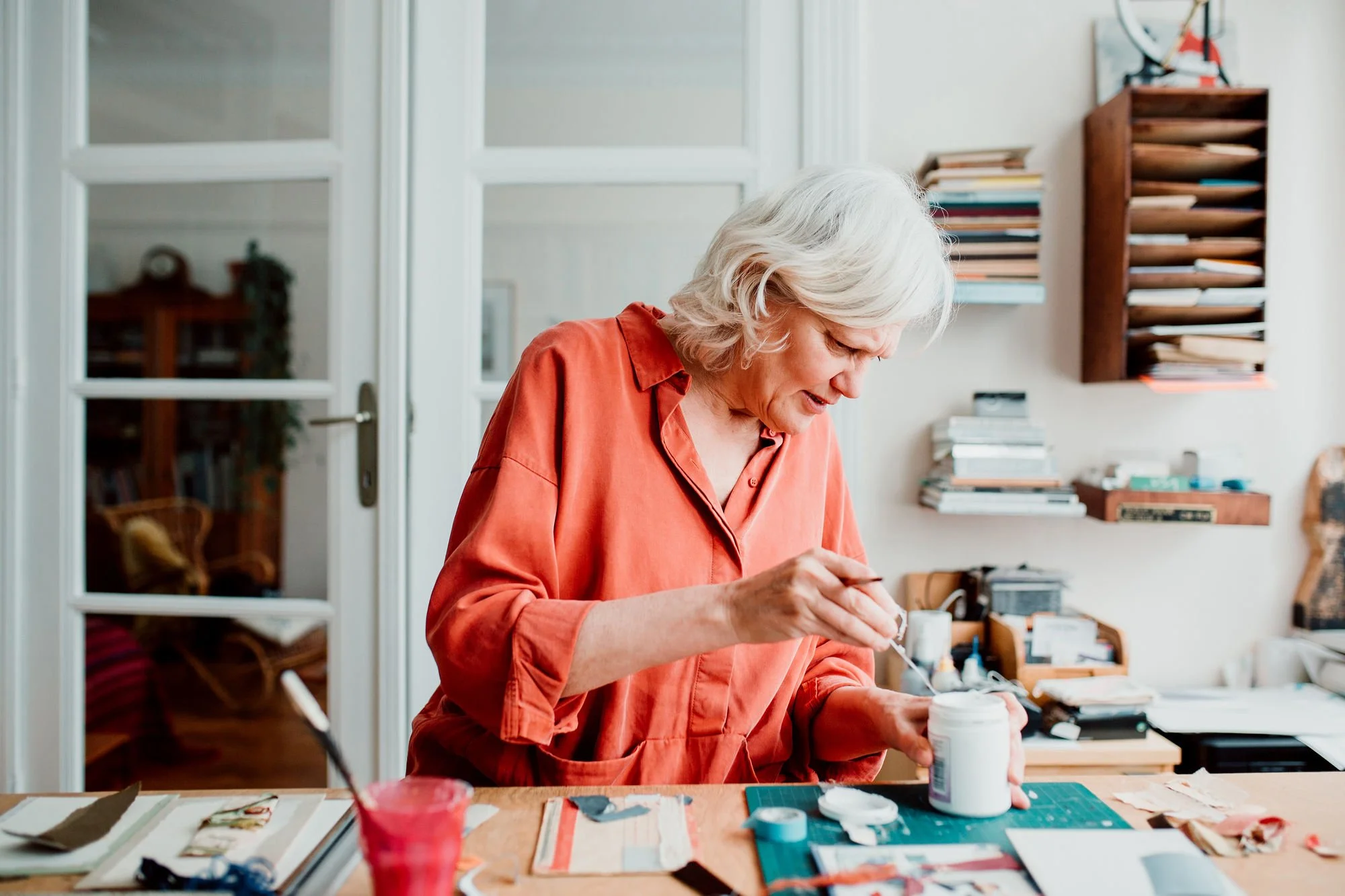
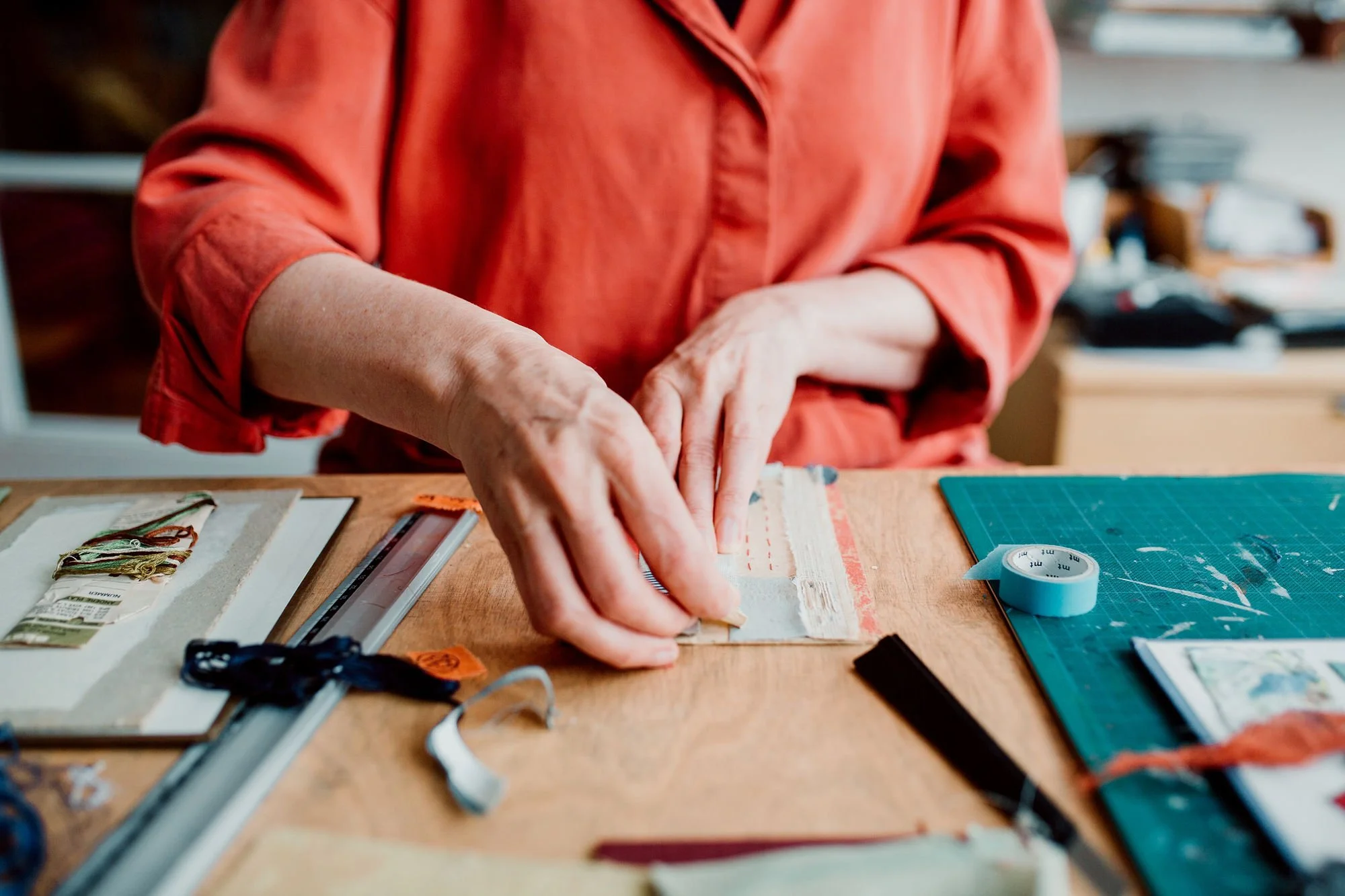



Antwerp, Belgium
Website
www.janienprummel.be
How would you describe your work?
I make abstract collages mainly with materials from (old) books. In vintage books I find all the materials that attract me, especially all kinds of paper and fabrics. I want to highlight the beauty of materials and how they are affected by time. For example you will find the curling and fraying of the fabric, the jagged edges of torn paper and the stains and discolouration’s back in my work. My collages have a lot of texture and great tactile qualities.
Much of my work is about ‘time’. How time acts on things, like paper. How time sometimes slips through our hands. In the ‘ a year in collages/366 collages in 2024’ project, I quite literally tried to capture a year in collages. I don’t want to hang nostalgically on the past but want to deconstruct and reinterpret it.
My work is also increasingly about the meaning of the book and information in our time.
For a long time, new information was processed in books. They were the carriers of important information. Some types of books like a dictionary, an encyclopaedia or an atlas are disappearing from our collective consciousness. Google has adopted all three of these formats. What is the meaning of a book anymore in this day and age? How long will we use books? Besides, I feel a great love for the craft of bookbinding, the tangible and personal nature of a book. My work is, I think, besides a question about the meaning, also an expression of my love for the book.
I hope my work touches people; brings beauty, peace, recognition or e.g. playfulness.
What inspires you?
Of course there are the books themselves, especially the ones with the fabric cover. It is often the material that inspires me. I can become very happy about a beautiful, old colour blue or a stain on a cover. I enjoy the play of colour and shape and finding a good composition, which I find exciting and inspiring every time.
You will find my love for nature back in my work. My love for open space, the sea and the horizon, can be found in my collages. When you look around, you find abstract compositions everywhere.
The embroidery threads that my mum left behind. Her ‘textile upbringing’ is where it al started. I pick up where she left. I weave her legacy/ her threads through my work.
Lately I am very intrigued by automatic writing, markmaking and drawing. I draw or write on bookpages and use those in my collages. It gives another energy to the work.
Can you speak about your process?
First there is the fase of deconstruction. I take the whole book apart, the bookboard, the fabric, the spine. Sometimes you find beautiful paper hidden in the spine. I use everything from the book itself to the tiniest snippet of paper or fabric. I make sketchbooks from the inside of the books. Working in a sketchbook is a safe and great way to get the creative engine started. It is important that there is a multitude of material around me. Then I let myself be guided by colour or texture or a limiting idea.
Then I get into a flow and one collage emerges from another. As a result, series often emerge.
I work directly on the bookboard, on paper or on wooden panels. I like the contact with the material and working with my hands. Sometimes I cut the bookboard with a knive but mostly I love to tear my material. There is somethng very satisfying in that act. It gives a loose effect and less control. Sometimes a composition emerges very quick and sometimes it is is like puzzle, you have to wait for the right last bit.
Collage encourages me to look at the world in a fresh/new way. Arranging and rearranging the elements is a form of play. It is also a place where I find peace and can slow down, become absorbed in the moment. There is always a search for balance, for that moment when the collage/composition is right.
How did you become interested in art?
I was raised on a farm with plenty of space to wander around. Playing in the attic and farm barn, I have actually always assembled. I brought together things I found and arranged them. In my home too, I like to bring together collections, objects in a composition. That is also the essence of collage for me; bringing together various existing things to create new meaning. Back then I didn’t recognise it as a form of art. That took me quite some time...
My mother embroidered, sewed, weaved and I joined her. My whole life I have been crafting and making. My education as creative therapist was deeply formative and playful.
Later I have been to art school and studied sculpture. I learned a lot of technique in art school but also became very insecure. Working as a host in an international theatre opened up my world. I saw a lot of wonderful contemporary dance, music and architecture.
At the same time I started working as a tourguide in art museums. All those great conversations with the visitors about art really shaped my preferences.
Do you have any favorite artists, movies, books, or quotes?
My work is deeply influenced by the Bauhaus movement and their aesthetics, the minimalism and use of colour. The DADA movement is also a favorite ‘oldy’. Lately I saw the collages of Hans Arp and Sophie Tauber. Just yummy!
Good photographers inspire me a lot, their choices in composition, colour or atmosphere.
For example: I love Saul Leiter for his light and composition or Bert Danckaert (Belgium) for his abstract compositions from buildings.
Anu Tuominen is a Finnish artist and an old time favourite. She has been collecting everyday objects (like potholders) and natural materials for 30 years. She arranges them into great compositions. I also love her book ‘Thinkables ‘ very much!
The raw and honest work of outsider artists like Judith Scott and James Castle touches me deeply. They remind me of not being to precise or restraint and work from the heart.
The fabric books of Louise Bourgois are an inspiraton. She once said ‘The act of sewing is a process of emotional repair’. For me, the same applies to ‘the act of collaging’.
What advice do you have for younger artists?
Everyone has a different path to walk and will encouter different obstacles. My greatest obstacle was the inner judge. It wasn’t really art, it was not good enough….etc. It held me back for quite some time. I had to regain plaisure, spontanity and a trust in my own path.
Then I started working in sketchbooks. They became a save space. You close the book and nobody sees what you are doing. In the sketchbook I really started collaging. The fact that you can turn a page really quickly helped me to get the inner judge tamed.
I worked in the sketchbooks for a few years and slowly opened up my books and gained confidence.




